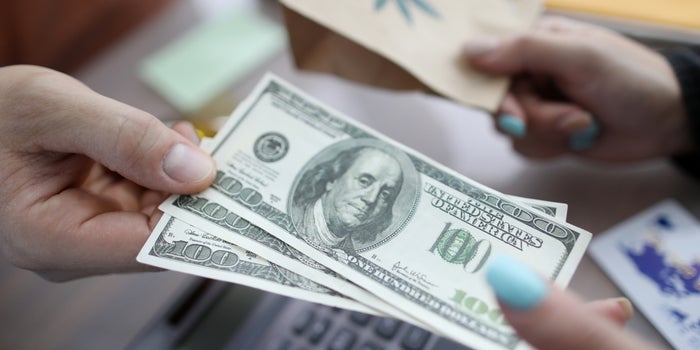You are here
Home 🌿 Recreational Marijuana News 🌿 Cannabis Consumers' Buying Patterns Sure Are Changing During The Pandemic 🌿Cannabis Consumers' Buying Patterns Sure Are Changing During The Pandemic

Consumers’ purchasing patterns involving marijuana have changed noticeably over the past several months in response to the coronavirus crisis.
Marijuana shoppers are spending more money per visit to recreational retail outlets. But they are shopping less often, perhaps for safety, or scheduling, reasons.
Our heat map of weekly adult-use sales changes in four western states show sales recovering through the year, with retailers benefiting from favorable treatment by state governments that allowed them to stay open or provide curbside service.

Across the country, in fact, many states declared cannabis companies “essential” businesses.
But there have been roller-coaster weeks in adult-use sales in California, Colorado, Nevada and Washington state, according to data provided by Seattle-based analytics firm Headset.
The initial state lockdowns and shelter-in-place orders caused recreational sales to drop almost 50% in late March in the four states – at least until federal stimulus checks started hitting consumers’ bank accounts in April and sales rebounded.
In the past month, however, a downturn in weekly sales has started to emerge. But it is too early to understand the exact cause.
One possibility: The U.S. government’s temporary lifeline to tens of millions of unemployed workers – $600 a week in extra jobless benefits – expired at the end of July.
But up until now, cannabis sales have been relatively recession-resistant.
The National Bureau of Economic Research formally proclaimed the recession began in February, when the coronavirus crisis caused much of the U.S. economy to pause.
Recession or not, marijuana shopping habits have changed markedly since March because of the COVID-19 pandemic, as shown by this chart:

The average amount a consumer purchases at one time – or the average basket size – has increased in California, Colorado, Nevada and Washington state, while at the same time, the number of shopping trips, or baskets, per week have declined.
For example, Nevada’s average basket size jumped $22 after March 23, from $55 to $77.
California and Colorado experienced increases of $10 or more, while Washington state consumers boosted their average purchases by close to $8.
Meanwhile, the number of baskets purchased per week has started to improve since the record lows recorded in March.
Colorado recorded an estimated 362,000 baskets for the week of March 23, the lowest of the year.
That figure has since recovered to 603,000 baskets at the end of August, just shy of the 613,000 recorded at the first of the year.
California, Nevada and Washington state recorded similar buying patterns.
Other mainstream industries report comparable trends as consumers adjust to pandemic shopping.
A survey of grocery shoppers conducted by the Food Industry Association found that 78% of customers changed where they shop, with 40% shopping at fewer stores and 44% spending more money per visit.
While the markets aren’t exactly comparable, the question for cannabis retailers is: Will be is this a temporary, pandemic-induced trend, or have consumers changed their shopping patterns for good?
420 Intel is Your Source for Marijuana News
420 Intel Canada is your leading news source for the Canadian cannabis industry. Get the latest updates on Canadian cannabis stocks and developments on how Canada continues to be a major player in the worldwide recreational and medical cannabis industry.
420 Intel Canada is the Canadian Industry news outlet that will keep you updated on how these Canadian developments in recreational and medical marijuana will impact the country and the world. Our commitment is to bring you the most important cannabis news stories from across Canada every day of the week.
Marijuana industry news is a constant endeavor with new developments each day. For marijuana news across the True North, 420 Intel Canada promises to bring you quality, Canadian, cannabis industry news.
You can get 420 Intel news delivered directly to your inbox by signing up for our daily marijuana news, ensuring you’re always kept up to date on the ever-changing cannabis industry. To stay even better informed about marijuana legalization news follow us on Twitter, Facebook and LinkedIn.




